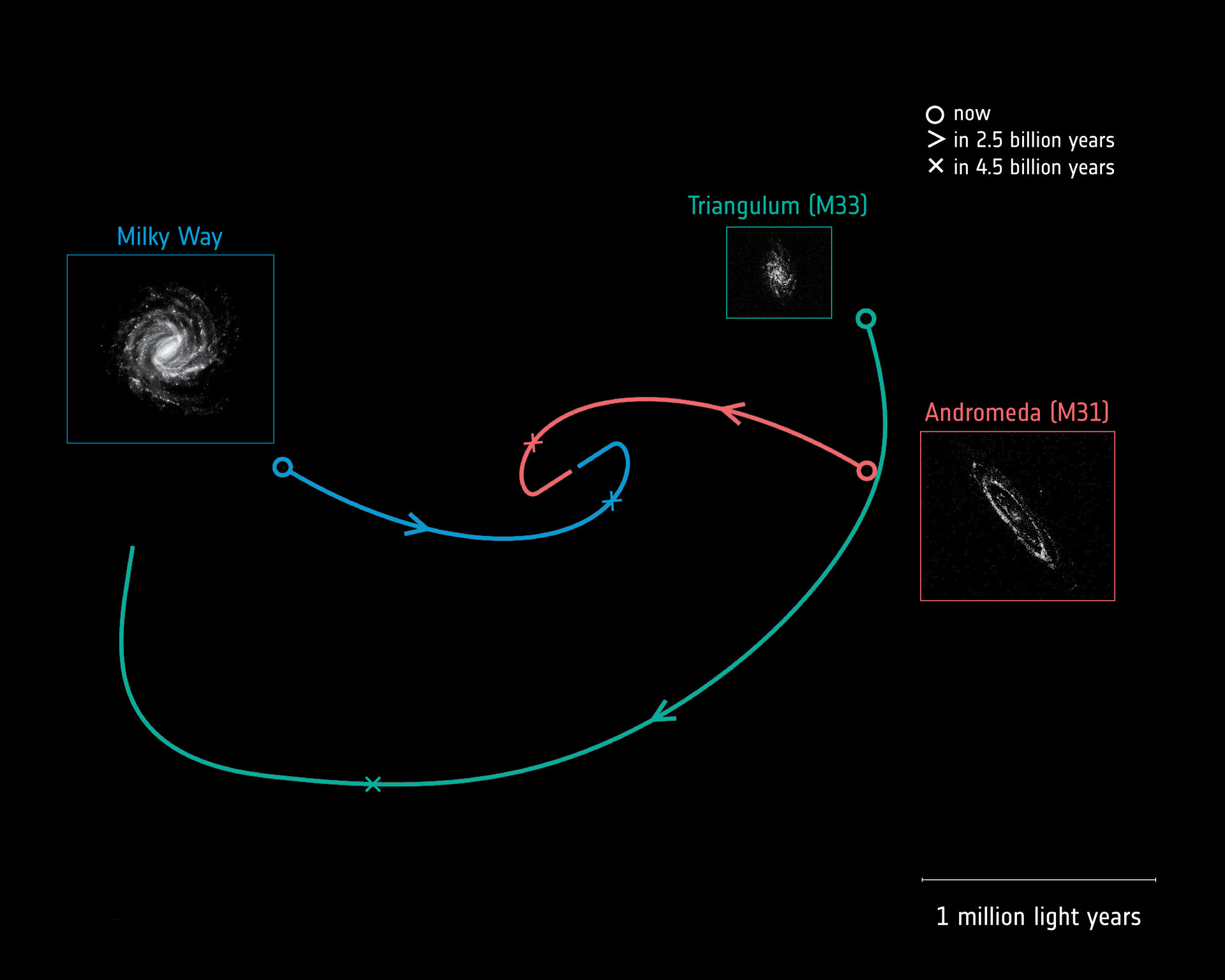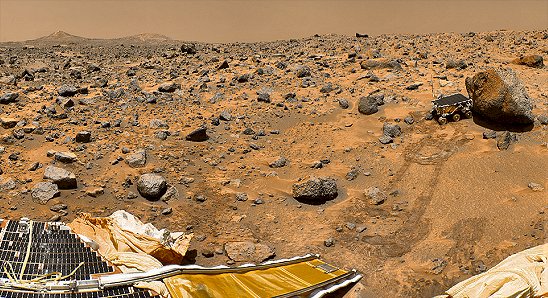Magellanic Clouds over Chile
Image Credit & Copyright: Felipe Mac Auliffe López
Beautiful image!

Unfortunately, it is so big that I had to post it as an attachment, and now I have used up one of my three attachments.

Oh well...
Anyway, all the galactic cirrus seen in the image in the vicinity of the Large and Small Magellanic Clouds reminded me of the real action going on between these two galaxies, and between the Magellanic Clouds and the Milky Way. Because there is a lot going on!
Let's start with the action between the two Clouds of Magellan! There is a bridge of stars stretching between the LMC and the SMC:
There is a short Wikipedia stub on the Magellanic Bridge, and I'm going to quote all of it:
Wikipedia wrote:
The Magellanic Bridge (MBR) is a stream of neutral hydrogen that links the two Magellanic Clouds, with a few known stars inside it. It should not be confused with the Magellanic Stream, which links the Magellanic Clouds to the Milky Way. It was discovered in 1963 by J. V. Hindman et al.
There is a continuous stream of stars throughout the Bridge linking the Large Magellanic Cloud (LMC) with the Small Magellanic Cloud (SMC). This stellar bridge is of greater concentration in the western part. There are two major density clumps, one near the SMC, the other midway between the galaxies, referred to as the OGLE Island.
And hey! You've
got to look at the gif on the Wikipedia page which is actually showing stars being pulled from the Small Magellanic Cloud to the Large Magellanic Cloud, using data from Gaia! Clicking on
this link will take you directly to a 3.3 MB version of the gif.
There is more to see when it comes to bridges of gas and stars between the Magellanic Clouds, because some of this gas is being captured by the Milky Way and turned into the Magellanic Stream:
NASA wrote:
Astronomers using NASA's Hubble Space Telescope have solved a 40-year mystery on the origin of the Magellanic Stream, a long ribbon of gas stretching nearly halfway around our Milky Way galaxy.
The Large and Small Magellanic Clouds, two dwarf galaxies orbiting the Milky Way, are at the head of the gaseous stream. Since the stream's discovery by radio telescopes in the early 1970s, astronomers have wondered whether the gas comes from one or both of the satellite galaxies. New Hubble observations reveal most of the gas was stripped from the Small Magellanic Cloud about 2 billion years ago, and a second region of the stream originated more recently from the Large Magellanic Cloud...
You've all heard that
Andromeda will collide with the Milky Way not in 3.9 billion years time, but only after 4.5 billion years, haven't you?
Well, don't heave a sigh of relief just yet. Because another set of fireworks awaits us much sooner, in just 2.4 billion years!


Sci News wrote:
Large Magellanic Cloud on Collision Course with Milky Way Galaxy
The Large Magellanic Cloud, a dwarf galaxy located approximately 163,000 light-years away, is on a collision course with the Milky Way with which it will merge in about 2.4 billion years, according to new research. This catastrophic event could wake up our Galaxy’s dormant supermassive black hole, which would begin devouring surrounding gas and increase in size by up to 8 times; the Milky Way’s stellar halo will undergo an equally impressive transformation, becoming 5 times more massive; the merger will also gravitationally eject central disk stars into the halo.
So in order to find protection from the LMC bullet crashing into the Milky Way in 2.4 billion year's time, I guess we'll have to escape to, I suppose Mars, sooner than expected, shouldn't we?
Let's finish on a sweeter note. I found an absolutely gorgeous image of the Small Magellanic Cloud, and I have to show it to you. It is too large for me to just copy, so I'll have to show it to you as an attachment:
Small Magellanic Cloud. Credit: Cosmic Kiwi.
You
have to go to
this page to read about Cosmic Kiwi's project, and then click on the image to see the full size of it.
Anyway. You can see all the nebulas that form on one side of the Small Magellanic Cloud, to the upper right in the image I posted.
That is the beginning of the Magellanic Bridge. And from there, you can start picturing all the Magellanic fireworks that our galaxy is going to see.
Ann
 Magellanic Clouds over Chile
Magellanic Clouds over Chile




